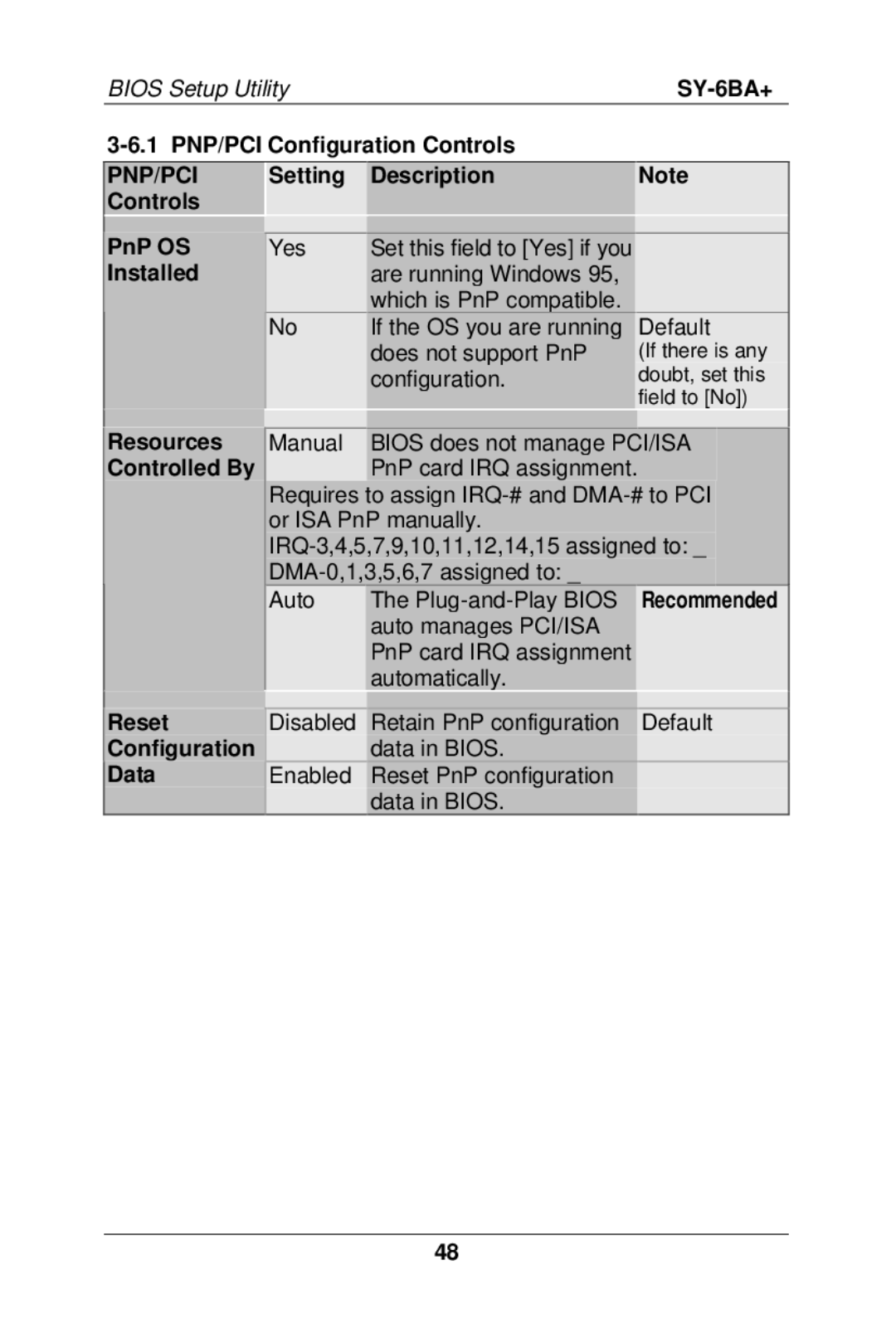SY-6BA+ specifications
The SOYO SY-6BA+ motherboard, launched during the late 1990s, became renowned for its exceptional features and performance capabilities, capturing the attention of PC enthusiasts and builders at the time. Designed to support Intel’s Socket 370 processors, including the popular Pentium III, it provided a robust foundation for high-performance systems.One of the key features of the SOYO SY-6BA+ is its versatility in memory support. It supports up to 1 GB of SDRAM with a 100 MHz front-side bus, allowing users to leverage enhanced memory bandwidth for improved performance. The board supports both single-sided and double-sided memory modules, offering flexibility to accommodate a range of memory configurations.
The architecture of the SY-6BA+ includes a VIA Apollo 100 chipset, which significantly boosts system stability and manages data effectively between the CPU and connected peripherals. The inclusion of a PCI expansion slot architecture ensures ample expansion capabilities, allowing users to add various add-on cards, such as graphics cards, sound cards, and network cards, catering to diverse computing needs.
An interesting feature of the SOYO SY-6BA+ is its onboard hardware monitoring system. This technology provides users with real-time updates on critical system parameters such as CPU temperature, fan speed, and system voltage. The health monitoring features enhance system reliability and longevity, making it an attractive option for users who crave stability in their builds.
In terms of connectivity, the motherboard is equipped with an integrated IDE controller that supports Ultra DMA/66, enabling faster data transfer rates with compatible hard drives. Additionally, the board has multiple USB ports, providing modern connectivity options for peripheral devices, even at a time when USB technology was still on the rise.
The SOYO SY-6BA+ also boasts a user-friendly BIOS interface, granting users access to various configuration options to optimize performance. Its support for overclocking provides experienced users with the tools necessary to push their systems beyond standard specifications, enhancing overall performance while still prioritizing system stability.
In conclusion, the SOYO SY-6BA+ remains a testament to its era’s innovative approach to PC architecture and design. Its combination of robust features, versatile memory support, and expansion capabilities rendered it a desirable choice for both casual builders and serious enthusiasts during the late 1990s. As a historical piece, it reflects a significant transition in computer hardware technology, paving the way for future advancements in motherboard design.

